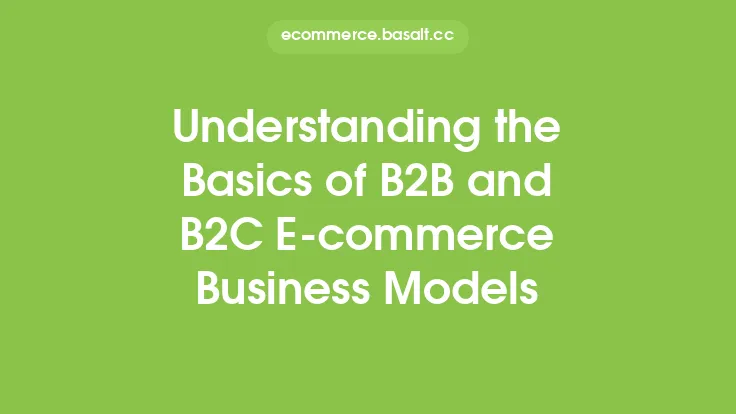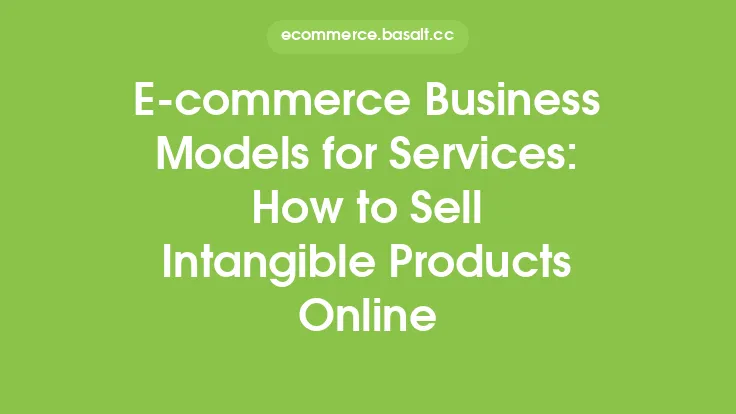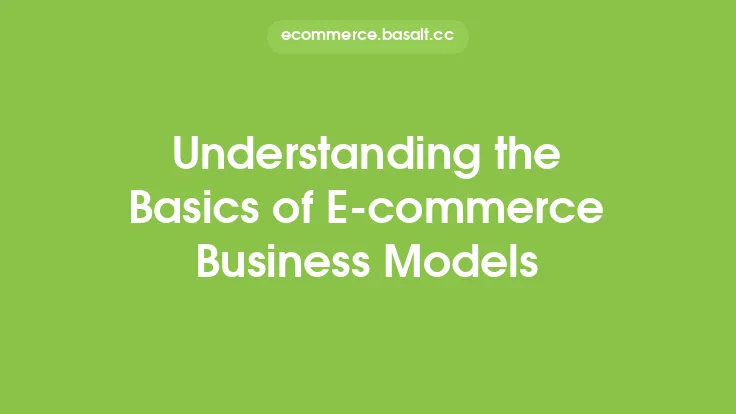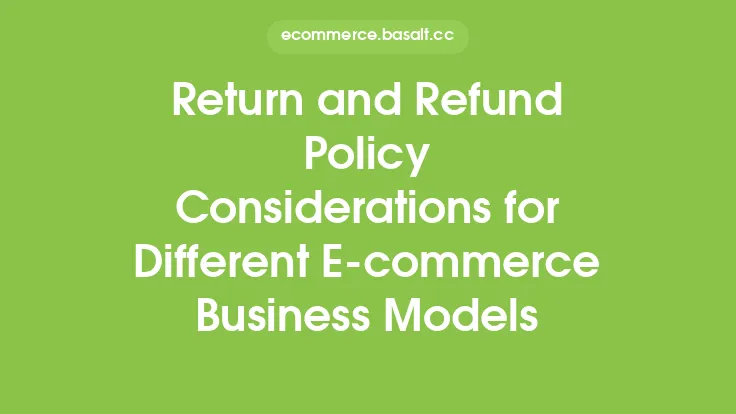The e-commerce landscape has undergone significant transformations over the years, with businesses continually seeking innovative ways to expand their reach and cater to diverse customer needs. One such strategy involves transitioning from traditional business-to-business (B2B) models to business-to-consumer (B2C) models, allowing companies to tap into new markets and increase their revenue streams. This shift requires a deep understanding of the target audience, market trends, and the development of effective strategies to navigate the complexities of B2C e-commerce.
Understanding B2B and B2C E-commerce Models
B2B e-commerce refers to the online transaction of goods or services between businesses, whereas B2C e-commerce involves direct sales to individual consumers. While B2B models often focus on bulk orders, contractual agreements, and personalized services, B2C models prioritize competitive pricing, user experience, and broad product offerings. Companies looking to expand from B2B to B2C must adapt their business strategies to accommodate these differences, including investing in user-friendly websites, implementing effective marketing campaigns, and ensuring seamless customer service.
Key Considerations for Expanding into B2C E-commerce
Several key factors must be considered when transitioning from a B2B to a B2C e-commerce model. Firstly, businesses must conduct thorough market research to understand consumer behavior, preferences, and pain points. This involves analyzing competitors, identifying market gaps, and developing a unique value proposition that sets the business apart. Additionally, companies must invest in robust e-commerce platforms that can handle high volumes of traffic, offer personalized recommendations, and provide secure payment options. The development of a strong brand identity and engaging marketing strategies is also crucial for attracting and retaining customers in the competitive B2C landscape.
Building a Strong Online Presence
A professional and user-friendly website is essential for B2C e-commerce success. The website should be optimized for search engines, feature high-quality product images and descriptions, and offer a seamless checkout process. Moreover, businesses must prioritize mobile responsiveness, as a significant portion of online shoppers use their smartphones to browse and make purchases. Investing in search engine optimization (SEO) and pay-per-click (PPC) advertising can also help increase visibility, drive traffic, and boost sales. By leveraging data analytics and performance metrics, companies can refine their website and marketing strategies to better meet the evolving needs of their target audience.
Customer Experience and Retention
Providing an exceptional customer experience is critical for building loyalty and driving repeat business in B2C e-commerce. This involves offering personalized recommendations, implementing efficient order fulfillment and shipping processes, and ensuring timely and effective customer support. Businesses can also leverage social media and email marketing to engage with customers, share brand stories, and promote new products or services. By fostering a sense of community and encouraging customer feedback, companies can create a loyal customer base that advocates for their brand and contributes to long-term growth.
Managing Logistics and Supply Chain Complexity
As businesses expand into B2C e-commerce, they must also navigate the complexities of logistics and supply chain management. This includes partnering with reliable shipping providers, implementing inventory management systems, and ensuring timely and cost-effective order fulfillment. Companies may also need to invest in warehousing and distribution infrastructure, particularly if they plan to offer fast and flexible shipping options. By streamlining logistics and supply chain operations, businesses can reduce costs, improve delivery times, and enhance the overall customer experience.
Measuring Success and Optimizing Strategies
To ensure the success of their B2C e-commerce ventures, businesses must establish clear key performance indicators (KPIs) and continuously monitor their website analytics, sales data, and customer feedback. This involves tracking metrics such as conversion rates, average order value, and customer retention rates, as well as analyzing the effectiveness of marketing campaigns and social media engagement. By leveraging data-driven insights, companies can refine their strategies, identify areas for improvement, and make informed decisions to drive growth and profitability in the competitive B2C e-commerce landscape.
Conclusion
Expanding from B2B to B2C e-commerce requires a deep understanding of the target audience, market trends, and the development of effective strategies to navigate the complexities of B2C sales. By prioritizing user experience, building a strong online presence, and providing exceptional customer service, businesses can successfully transition into the B2C market and increase their revenue streams. As the e-commerce landscape continues to evolve, companies that adapt to changing consumer needs and preferences will be well-positioned for long-term success and growth.





